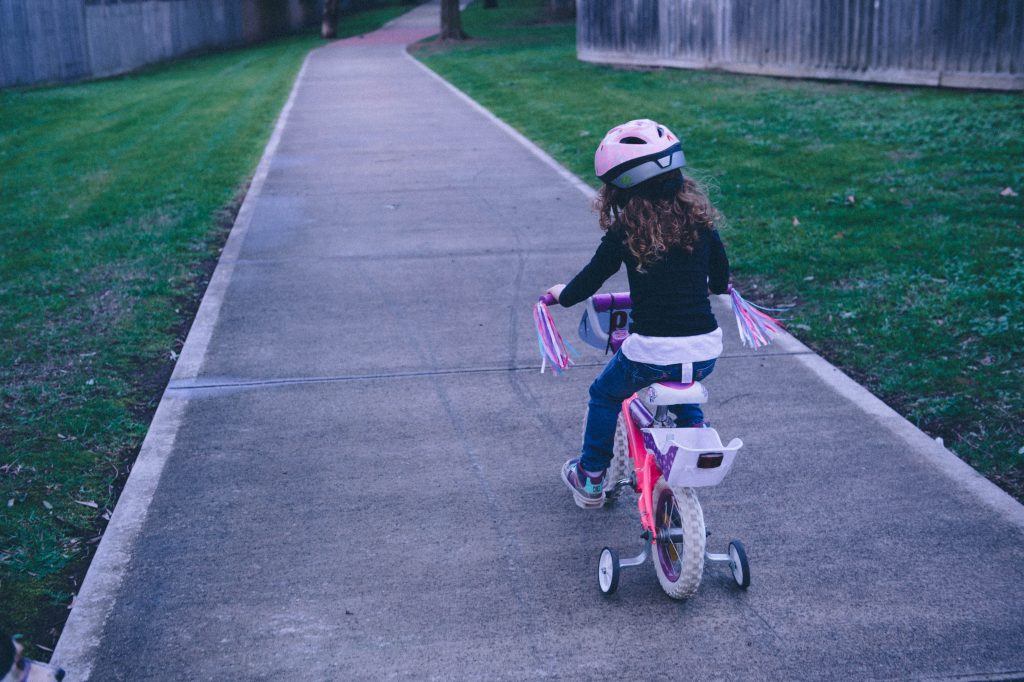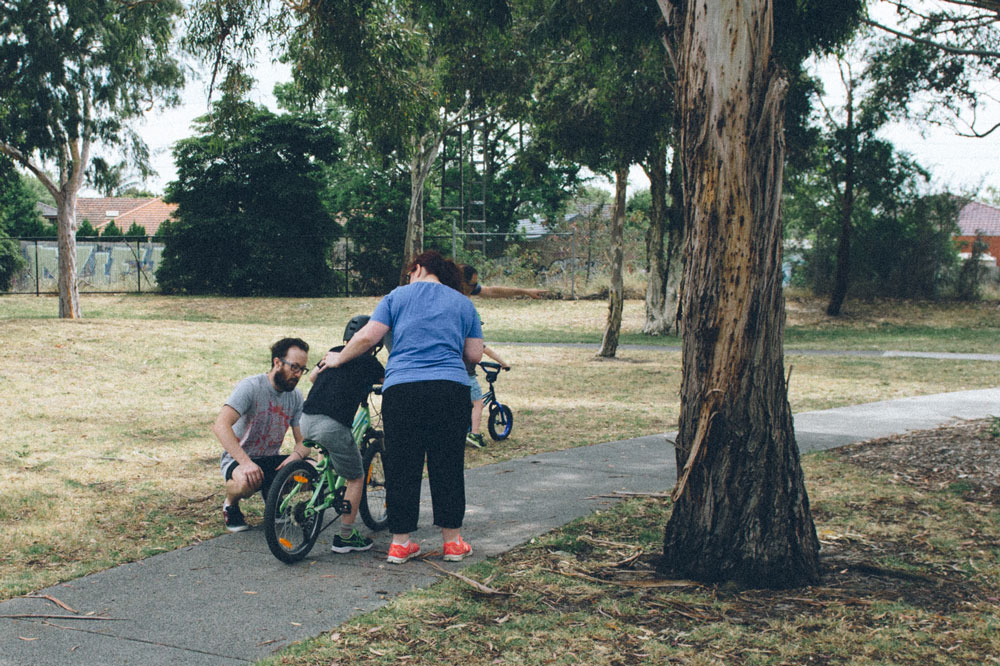

Riding a bicycle without training wheels is one of the greatest early milestones your child makes but there’s not a lot of information out there on teaching your child how to ride. Perhaps that’s why our ‘Learn To Ride’ days have always been so popular? We haven’t got an event planned at the time of writing this but I figured I could share some of our tips for teaching your child how to ride a two wheeled bicycle.
How to start.
- Start early.
Parents often say how young their child was when they started walking; ‘bike people’ will always say how young their child was when they started riding. I like the idea that if they can walk, it’s time to get kids on a balance bike.
. - Go riding as a family.
A big part of getting your child interested in riding a bicycle is exposure to the joys of cycling. Get a child seat or trailer for your bike, strap them in and go cycling as a family.
. - Positivity and patience.
A lot can be said for a positive attitude. I see so many kids progress faster when they’re surrounded by positive voices. Saying things like, “you’ve got this” and “I believe in you” make a huge, beneficial difference while saying things like “You’re a big girl/boy, and big girls/boys can ride bikes” or “your friends can ride” can often make a child feel like they’re already failing. I start being (overly) positive way before we even go near a bike without training wheels. Build their confidence early then keep it going while they’re learning.
As for patience, kids will all learn at a different pace. Your aim is to remain calm (well, except for that positive excitement for them to get riding) and try not get frustrated when they show signs of struggling.
. - Learning to pedal.
You’ve spent how long teaching your kid move their legs back and forth to walk and now you want to change that and make their legs go in circles? For some kids, that can be confusing while others will just get it. Sometimes, training wheels will help them learn that motion but try not to leave them on for too long. Initially it may be necessary to manually guide their feet with the pedals.
Ok, we’ve got the training wheels off, what now?
- Touching the ground – a good size size bike.
You’ve worked hard to build your child’s confidence so you don’t want to destroy that instantly by putting them on a bike too big for them. I’ve often said, “I’m a big fan of a small bike” because I like seeing kids jump on and feel comfortable enough to give it a go. Touching the ground with both feet is, I believe, the key here. Not necessarily both feet flat on the floor, but a firm enough footing so they can stop/start with ease. Make sure the bike is big enough to pedal comfortably as well.
. - How to help your child balance.
Many parents hold the back of the seat and the handlebar whereas I find holding the child’s neck/shoulders is much more beneficial and often helps them learn their balance quicker. There’s a couple of reasons;
– you don’t have to lean over so much to reach the seat
– you’re not doing all the work, the child needs to control the bike for themselves and makes the connection earlier
– your child typically finds it uncomfortable and wants you to let go, thus further motivating them to learn
So with your hand on their neck/shoulders, push them along to help pick up speed.
At this point, I find starting with feet on the ground and using the bicycle in the same way as a balance bike and running to gain speed and keep balance. Then make the connection with the pedals.
. - Getting up to speed.
There’s a great motivational poster about life and bicycles and making sure you’re always moving to keep balance. Kids often slow down and try ride without any forward motion. You want them to be riding a little faster than your walking pace (unless of course you’re an Olympic speed walker, then maybe a little slower). With your hands on their neck/shoulders, help them reach and maintain that pace until they’re pedalling is keeping them there.
. - Letting them fall.
Ok, so this one sounds like I’m just being mean but the intention is good, I swear! Let your child fall. It’s part of that parental instinct that wants us to catch our children as they fall but for this purpose, unless it looks like they’ll cause themselves harm, let them fall. When they do, try not to pick them up, praise them for getting up on their own, note they’re not actually hurt and prompt them to return to riding. Teach them to put their foot on the ground to stop the fall and you’ll see a rapid progression.
. - Positivity and patience.
This is where that positivity and patience will come in. It’s easy to get frustrated when your child doesn’t learn as fast as you’d hoped. I mean, you can ride a bike, why can’t they, right? It’s not often that a child will pick it up straight away. Obviously there’ll be kids that do and they’re normally the ones who play lots of sport, struggle to sit still and have little to no fear. But most of the time, it may take an hour, it may take 2. Sometimes the best option is to try for 30 minutes every day or two until they pick it up. If that’s the case, note how much improvement your child makes each time and really congratulate them for that.
Note: I’ve mentioned positivity and patience twice because most of the time when I’ve helped parents teach their kids to ride, it’s the parents holding the kids back. Let them go, they’ll ride, fall over, get up and try again.





